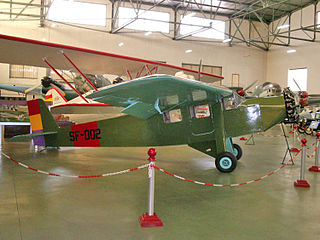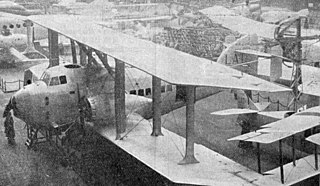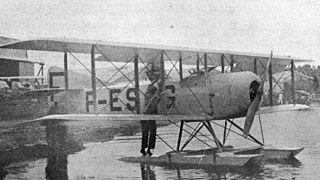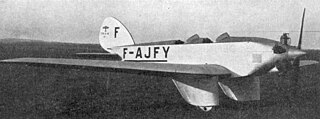Related Research Articles

The Farman F 400 was a 1930s French three-seat cabin high-winged monoplane which was designed and built by Farman.

The Piel CP-30 Emeraude is an aircraft designed in France in the mid-1950s and widely built both by factories and homebuilders.

The Latécoère 4 was a three-engined, 15-passenger biplane built in France in the early 1920s. It proved difficult to fly and was discontinued, though a second machine was completed as the Latécoère 5 bomber.
The Farman F.280 was a three engine, cantilever wing monoplane designed in France as a mail carrier in the early 1930s. Underpowered and slow, only two were built and briefly used.
The Bernard H 110 was a single engine, single seat monoplane floatplane fighter designed for a French Navy competition. It flew in 1935 but had only made four test flights when the Bernard company was declared bankrupt, preventing further development.

The Coupé-Aviation JC-01 is the first of a series of very similar designs of two seat, single engine sports aircraft, amateur built from plans in France from 1976. These provided a range of engine sizes and undercarriage layouts, but total production was small.
The AM-69 Georges Payre, also known as the Arts & Métiers AM-69 and the ENAM-69/70, was a conventionally laid out low wing monoplane designed and built by French students in the early 1970s. It was intended as a trainer, seating two in tandem.
The Piel CP-40 Donald is a French homebuilt, single engine, single seat, high wing aircraft. It was first flown in the early 1950s, though the last of the three examples completed did not fly until almost forty years later.
The Caudron C.220 was a two-seat French biplane trainer. Only two were built, using different engines.

The Caudron C.27 was a French biplane, a two-seat basic trainer which also competed successfully in the 1920s.

The Caudron C.101 and its variants, the C.103, C.104 and C.107 were French two seat reconnaissance aircraft flown from 1925, differing in their engines.

The Caudron C.65 was a single seat biplane floatplane designed and built in France in 1922. Only one was completed.

The Caudron C.43 was the first French five-engined aircraft, a biplane intended for passenger transport or military use and multi-engined for safety. A development of the three-engined Caudron C.39, it had one tractor configuration engine in the nose and two push-pull pairs between the wings. It was capable of carrying eight passengers but was not developed.

The Caudron C.23 was a French long range twin engine night bomber, flown in the last year of World War I. Post-war some machines were modified to carry passengers.

The Delanne 11 was a French two seat touring aircraft. Only one was built.

The Albert A-60 was a single engine, two seat, wooden sports monoplane designed and built in France in the early 1930s. Two were built and flown with three different engines.
The WNF Wn 16 was an Austrian experimental aircraft built near the start of World War II to test a tricycle undercarriage.
The Kellner-Béchereau 23 was a French two seat cabin touring aircraft, built in 1932. Its wing was constructed in a novel way. Only one was completed.

The Couzinet 20 was a low power, three-engined aircraft designed in France in 1929 for postal duties, though it could have been configured to carry three passengers or as a medical transport. Variants flew with three different engines but only two airframes were completed.

The Couzinet 30 was a light transport aircraft / mailplane designed and built in France in 1930 at Société des Avions René Couzinet.
References
- 1 2 3 Gaillard, Pierre (1990). Les Avions Francais de 1944 à 1964. Paris: Éditions EPA. pp. 75, 122. ISBN 2-85120-350-9.
- 1 2 3 4 5 6 7 Massé, Xavier. Avions Piel: du CP 10 de 1944 au CP 1950 de 1983 (2004 ed.). Nouvelles Editions Latines. pp. 21–8.
- ↑ A view of the fuselage during a reconstruction project
- 1 2 3 Chillon, Jacques. Fox Papa-Registre des avions Français amateur (2009 ed.). Brive: Ver Luisant. p. 86. ISBN 978-2-3555-1-066-3.
- ↑ Partington, Dave (2014). European registers handbook 2014. Air Britain (Historians) Ltd. ISBN 978-0-85130-465-6.
- ↑ Cutaway view of CP-210 (from Piel website)